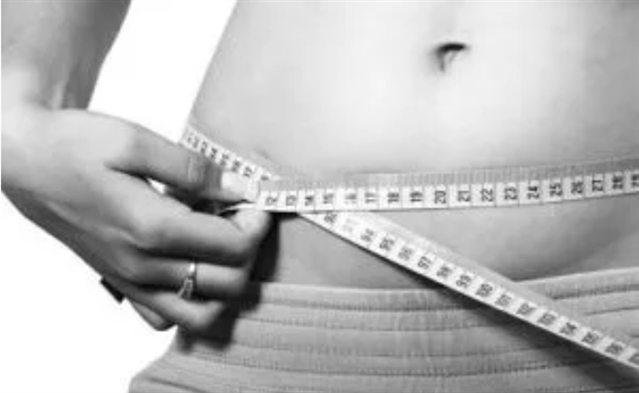论文标题:Sex differences in body composition and association with cardiometabolic risk
期刊:Biology of Sex Differences
作者:Melanie Schorr et al
发表时间: 2018/6/27
数字识别码:10.1186/s13293-018-0189-3
原文链接:https://bsd.biomedcentral.com/articles/10.1186/s13293-018-0189-3?utm_source=WeChat&utm_medium=Social_media_organic&utm_content=DaiDen-BMC-Biology_of_Sex_Differences-Biology-China&utm_campaign=AJL_USG_BSCN_DD_BOSD_BLOG
最近发表于Biology of Sex Differences的文章解释了男女身体成分的差异。利用现代解剖学和功能成像技术,作者阐述了脂肪分布的微妙差异,并将其与男女中不同的代谢风险联系起来。

毫无疑问,男性和女性的身体成分不同,男性的脂肪通常积累于腹部,形成典型的苹果型身材,而女性身体呈梨形,下肢脂肪较多。但是这些差异能否会以不同的方式影响男性和女性的健康?
尽管男性和女性都易患肥胖症,但即便其他因素如总脂肪数或体重指数(BMI)相似,肥胖在不同性别中对健康的影响往往是不同的。
这一观察结果使Biology of Sex Differences最新文章的作者认为,例如BMI和总脂肪量等经典指标其实不够灵敏,无法确保准确地了解男性和女性的代谢风险。
马萨诸塞州综合医院和哈佛医学院的Schorr等使用解剖学和功能成像技术相结合,对一组年龄和体重指数相似的超重/肥胖男性和女性的身体成分和异位脂肪沉积进行了深入分析。他们的研究结果支持了性别差异对心血管代谢风险的影响大于多余总脂肪量的假设。
苹果和梨型身体形状的一般差异已得到证实,与男性相比,女性下肢的脂肪更多,男性则有更多的内脏脂肪组织(VAT),同时女性总脂肪量也高于男性。然而,在相近的年龄和体重指数下,男性表型与更有害的心血管代谢风险特征有关。梨型体型的脂肪堆积于下肢,相比之下则成为一种保护性因素。
尽管在体重范围内男性患心血管代谢疾病的风险高于女性,但随着体重指数的增加,女性心血管代谢风险性别特异性的增加却大于男性。
使用双能X射线吸收测定法、计算机断层扫描和磁共振光谱法评估不同的脂肪区室,包括异位脂肪、瘦肉和肌肉质量,有助于了解其背后的原因。
尽管女性的内脏脂肪组织总体上较少,但与男性相比,女性内脏脂肪组织的累积会导致更大的心血管代谢风险。男性的肝内和肌细胞内脂质含量也高于女性,而肌细胞内脂质是男性而非女性的特殊危害因素。四肢肌肉的存在对两性都有保护作用,这表明即便脂肪量没有改变,肌肉量的增加也可以抵消异位脂肪累积的影响。

总之,我们了解到身体成分如何以性别特异性的方式影响心血管代谢风险:男性总体上更容易患病,但内脏脂肪组织是女性的主要危险因素,肌细胞内脂质是男性危害最大的因素。
这些差异背后的机制仍有待产阐明,但性类固醇和性别特异性遗传决定因素可能是调节身体成分和其与代谢风险之间关系的代表性关键因素。
可以肯定的是,新方法和技术的建立所带来的可能性是充分了解性别特异脂肪分布与代谢风险的基础。
那么目前还需要进行哪些工作?作者强调了确认性别差异与心血管代谢风险之间因果关系的重要性,而我们期待长期的纵向研究,以此评估异位脂肪沉积能否导致男性和女性之间更高的心血管代谢发病率。
摘要:
Background
Body composition differs between men and women, with women having proportionally more fat mass and men more muscle mass. Although men and women are both susceptible to obesity, health consequences differ between the sexes. The purpose of our study was to assess sex differences in body composition using anatomic and functional imaging techniques, and its relationship to cardiometabolic risk markers in subjects with overweight/obesity.
Methods
After written informed consent, we prospectively recruited 208 subjects with overweight/obesity who were otherwise healthy (94 men, 114 women, age 37 ± 10 years, BMI 35 ± 6 kg/m2). Subjects underwent dual-energy X-ray absorptiometry (DXA) and computed tomography (CT) for fat and muscle mass, proton MR spectroscopy (1H-MRS) for intrahepatic (IHL) and intramyocellular lipids (IMCL), an oral glucose tolerance test, serum insulin, lipids, and inflammatory markers. Men and women were compared by Wilcoxon signed rank test. Linear correlation and multivariate analyses between body composition and cardiometabolic risk markers were performed.
Results
Women and men were of similar mean age and BMI (p ≥ 0.2). Women had higher %fat mass, extremity fat, and lower lean mass compared to men (p ≤ 0.0005). However, men had higher visceral adipose tissue (VAT) and IMCL and higher age-and BMI-adjusted IHL (p < 0.05). At similar age and BMI, men had a more detrimental cardiometabolic risk profile compared to women (p < 0.01). However, VAT in women, and IMCL in men, were more strongly associated with cardiometabolic risk markers, while more lower extremity fat was associated with a more favorable cardiometabolic profile in women compared to men (p ≤ 0.03).
Conclusions
Although the male pattern of fat distribution is associated with a more detrimental cardiometabolic risk profile compared to women of similar age and BMI, VAT is more strongly associated with cardiometabolic risk markers in women, while IMCL are more detrimental in men. Lower extremity fat is relatively protective, in women more than in men. This suggests that detailed anatomic and functional imaging, rather than BMI, provides a more complete understanding of metabolic risk associated with sex differences in fat distribution.
阅读论文原文,请访问
https://bsd.biomedcentral.com/articles/10.1186/s13293-018-0189-3?utm_source=WeChat&utm_medium=Social_media_organic&utm_content=DaiDen-BMC-Biology_of_Sex_Differences-Biology-China&utm_campaign=AJL_USG_BSCN_DD_BOSD_BLOG
期刊介绍:Biology of Sex Differences is the official journal of the Organization for the Study of Sex Differences, and a publication of the Society for Womens Health Research.
2017 Journal Metrics
Citation Impact
3.543 - 2-year Impact Factor
4.360 - 5-year Impact Factor
0.923 - Source Normalized Impact per Paper (SNIP)
来源:科学网
特别声明:本文转载仅仅是出于传播信息的需要,并不意味着代表本网站观点或证实其内容的真实性;如其他媒体、网站或个人从本网站转载使用,须保留本网站注明的“来源”,并自负版权等法律责任;作者如果不希望被转载或者联系转载稿费等事宜,请与我们接洽。